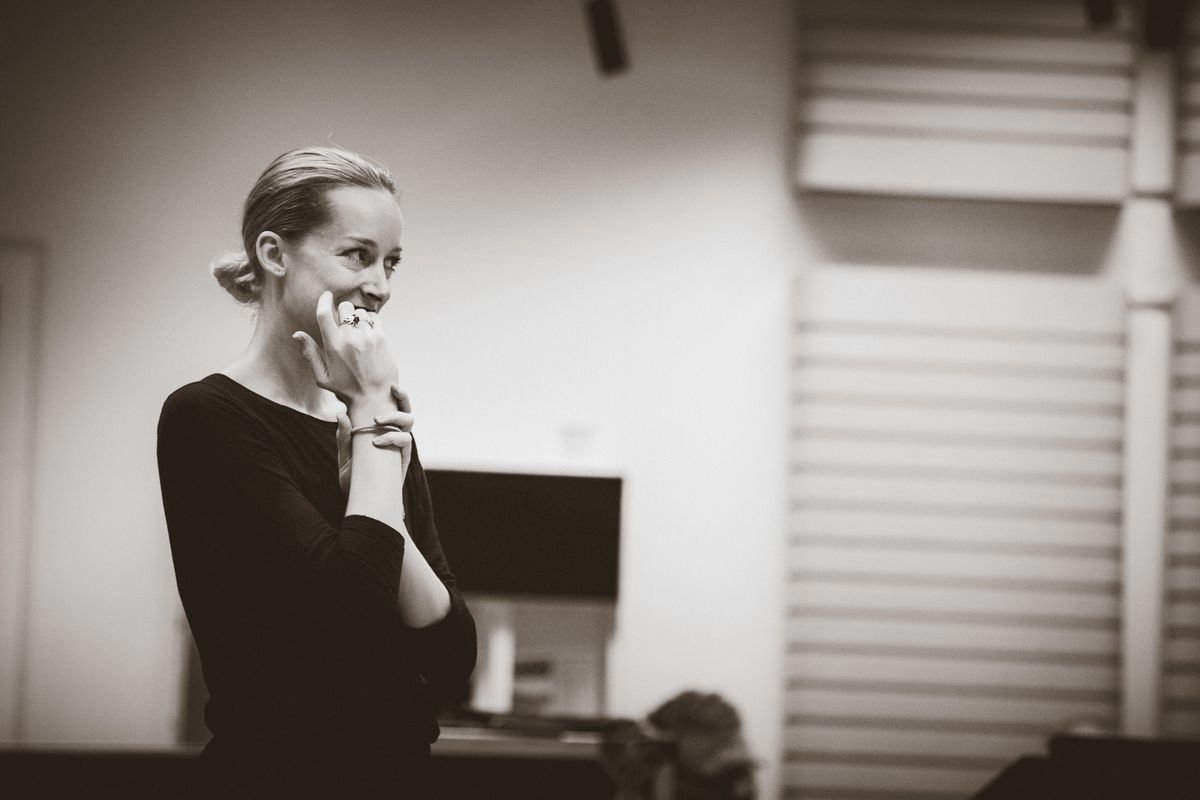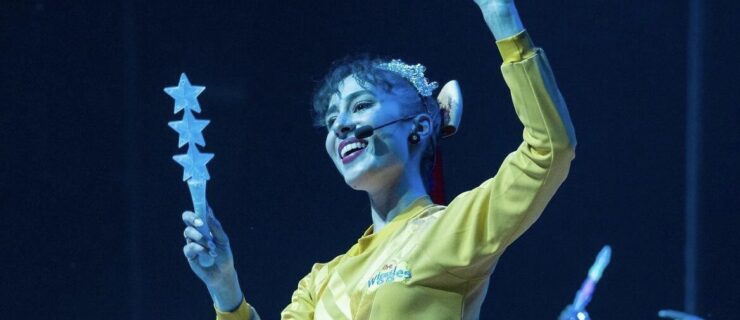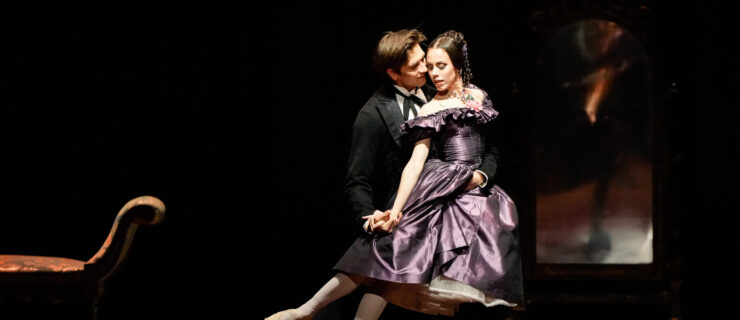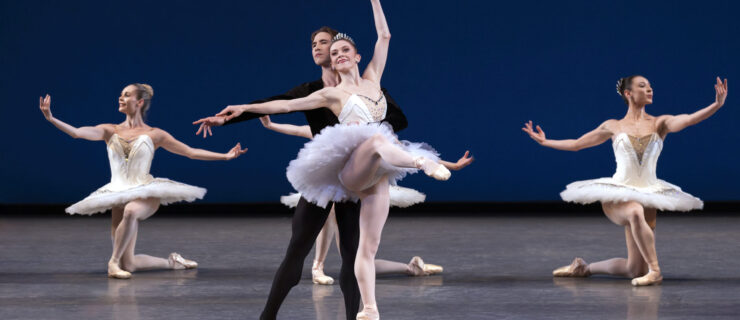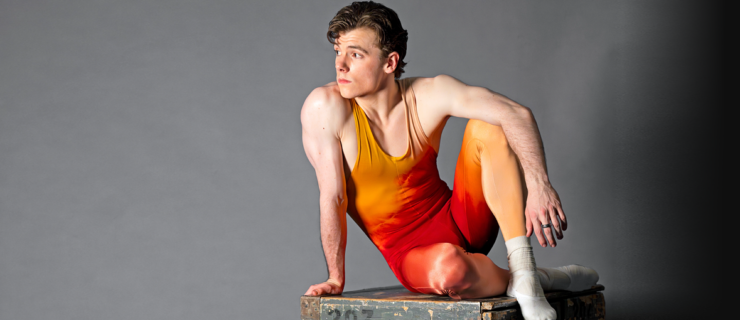How The Australian Ballet's Alice Topp Went From Coryphée To Resident Choreographer
Though Australian Ballet coryphée Alice Topp has been dancing since she was four, when it comes to choreographing, she’s just getting started. Topp created her first piece, Trace, on a whim in 2010 as part of The Australian Ballet’s annual Bodytorque program. Since then, she has gone on to make several main stage works for the company, as well as music videos for artists like Ben Folds and Megan Washington; in 2018 she was named one of the The Australian Ballet’s resident choreographers.
Topp plays what she calls “a fine Tetris” to balance her responsibilities as both dancer and choreographer. Yet despite her jet lag and packed schedule of rehearsals and sightseeing, she was bursting with energy when we met in New York during The Australian Ballet’s visit to the Joyce Theater last month, where her ballet Aurum was given its US premiere. “This is the first time my work is being performed overseas,” she says. “To be able to bring it to New York, which is my favorite city in the world—what a debut!”

The Australian Ballet’s Kevin Jackson and Leanne Stojmenov in Topp’s Aurum
Jeff Busby, Courtesy The Australian Ballet
Ahead, Topp shares how she got her choreographic start, why she feels the ballet world doesn’t have enough female choreographers and what is inspiring her for future projects
Lightning Strikes … Sort Of
“We have a choreographic season called Bodytorque at The Australian Ballet to encourage dancers to delve into creating. The year I started, the only female who was meant to be choreographing that season became pregnant and backed out. Our artistic director asked me if I would be interested in doing it, because our musical director Nicolette Fraillon had suggested that I would be a good option. I’d never considered choreographing before because I always thought you would have this lightning bolt strike you, and it would be a calling. I was in the corps at the time, and all the other choreographers were principal males, so I just felt like a wildcard. Our artistic director gave me a couple of days to decide, and I’ve got friends who had applied for grants and were really struggling to make projects. I just thought, ‘I’ve been handed this opportunity, I’ve got to give it a go.’ So I did, and I had the time of my life and just knew this is what I want to do with my life from now on.”
Perfecting Her Process
“Each project has had its own unique journey, and I’ve learned a lot every time, every step of the way. The first time I was choreographing, I had no idea what I was doing. I surrounded myself with a really great team of people, and it was a collaboration, so I didn’t feel so alone. Then, because the first piece was received well, I think I was more nervous for the second piece because there was expectation.
“I plan a structure and develop the concept with my creative team. From there, once I’ve got the music, set design, lighting, and costumes in my head and have a vision for it, I get in the studio with the dancers and create the material. I don’t come in the studio and go, ‘This is it, learn it.’ I get a couple of ideas that I want to explore, but quite often they don’t work out, and that’s when the best things happen. It’s a collaborative process for me, which might be a little bit more time consuming, but I’m very much inspired and informed by the dancers. It’s really important that the dancers inject their creative voices because they’re such extraordinary artists, and this is their time. Being able to give them permission to be themselves and have their say and express their ideas means that we can create something that’s bespoke. Then the final product is something we all feel passionate about.”
Mastering Different Choreographic Mediums
“I really enjoy dance on film. When you’re viewing a show onstage, you’re seeing it up on a platform and you’re seeing one side of it from the auditorium. But to be able to film, you get a birds-eye view. If you’re dancing with a partner, you can film inside that partnership and around it, and even underneath it. That helps invite the audience into your world and your experience as a dancer—the way you look at your partner, or what your view is like when they lift you. That fascinates me; to be able to share that experience with people who don’t know what it would feel like to be a ballet dancer. And being able to collaborate with extraordinary musicians and artists is also always a rewarding experience.

Topp in the studio
Kate Longley, Courtesy The Australian Ballet
“I have a few projects up my sleeve for the future, but I want to do it all—I just want to continue making art, and more, and more, and more of it. I’m inspired by so many different mediums, and I’d love to explore it all. I’d like to do more film, more music videos, more productions all over the world with different companies. I’m looking forward to continuing to develop my artistic voice and expand my choreographic vocabulary, to continuing learning, creating, and collaborating.”
How The Ballet World Can Create More LeadershipOpportunities For Women
“I think the lack of female choreographers in ballet comes down to a combination of things, and I can only share this from my own experience. It’s not necessarily that the women work a lot harder, but we tend to be there until the end of the night in a lot of those big classical ballets. In Swan Lake, the guys are done after Act III, and we’re there at the very end—it’s the same with Giselle and the Willis and La Bayadère with the Kingdom of the Shades. I think it can be more demanding as a corps.
“Another big thing is just the nature of the work doesn’t lend itself to the individual artistic voice, so you never really nurture that. Those big scenes—the swans, shades, snowflakes, flowers—are about the women dancing in unison, and the guys don’t do as much of that. I think the guys tend to get away with a bit more individualism, and if they’ve got a bit of chutzpah and cowboy attitude, they stand out and it’s rewarded. Whereas women are taught to conform and to fit in, and not to stand out for the wrong reasons. Your goal for the first few years in the company is about fitting in—if you’re one of 24 swans and you spend all day, every day, thinking, ‘Is my arm higher than the other person?,’ or ‘I’m not on the red mark,’ you’re not exploring and exercising that creative part of your brain that’s making different artistic choices.
“I do think it’s improving though. I think a lot of my friends have seen my journey and see that choreographing or trying something new isn’t this great big scary beast of a thing. It can be fun and playful, even if you give it a go and decide it’s not your jam. It’s imperative to have that platform like our choreographic season, though, where people can take a risk without that loaded pressure of a main stage.”
What She’s Listening To For Inspiration
“When I choreograph, even though I’ve settled on my music, I tend to play cafe music in the studio to create movement. I don’t want the dancers to get tired of the music, I want it to be fresh. I also find that I get locked down towards counting and limited by steps, so if I just put on jazz or blues in the background, we get into a groove and just come up with a lot of movement. Playing music that relaxes you and helps free up the mind and body helps you to not be restricted and stay inspired.”
Topp’s Top Artists:
- Ludovico Einaudi
- Max Richter
- Marlon Williams
- Sharon Jones & The Dap-Kings
- Rolling Stones
- Charles Bradley
